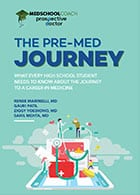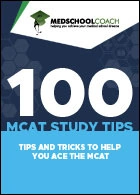
Table of Contents
Below, we have listed the top DO schools in the country. They are generally easier to get into than MD schools, but every school is unique. The number of osteopathic medical students has more than doubled in the past 15 years, so it’s more vital than ever to know where to apply.
What is an osteopathic physician? An osteopathic physician received their education from an osteopathic college. They are Doctors of Osteopathy (DOs) rather than Medical Doctors (MDs) and hold equal status to MDs as physicians. DOs typically focus on holistic and preventative medicine, although that’s certainly not a requirement to apply to DO schools.
As you prepare your school lists, you may be drawn to DO programs for their different philosophies and (typically) easier admissions standards. There are 42 DO colleges with American Osteopathic Association accreditation at 67 site locations across the 36 states.
Use MedSchoolExplorer, our FREE database of all US medical programs to build your ideal list of where to apply.
Database of DO Schools in the United States
Top 10 DO Schools in the U.S.
1. University of North Texas Health Science Center Texas College of Osteopathic Medicine
UNTHSC’s Texas College of Osteopathic Medicine (TCOM) was awarded the highest level of accreditation from the American Osteopathic Association’s Commission on Osteopathic College Accreditation.
It has the lowest tuition rate for DO schools — below $20,000 for in-state residents. Because this school is in Texas, you will have to apply through TMDSAS, not AACOMAS. This school gets very competitive because it only allows 10% of its students to be non-Texas residents.
Learn More: How Much Does It Cost to Attend Med School?
2. University of Pikeville Kentucky College of Osteopathic Medicine
Not only is the University of Pikeville Kentucky located in the beautiful Appalachian mountains, but it is also one of the top five most affordable private medical schools. KYCOM offers students with limited financial resources a Student Advantage Program separate from federal financial aid.
KYCOM’s curriculum prepares students for primary care residencies and teaches patient-centered care while using the most up-to-date technologies.
Read Next: Easiest Medical Schools to Get Into
3. Lake Erie College of Osteopathic Medicine
This college is one of the largest and most affordable osteopathic colleges. Lake Erie has campuses in Pennsylvania, Florida, and New York. LECOM offers the Accreditation Council for Graduate Medical Education (ACGME)-accredited residencies in family medicine, orthopedic surgery, psychiatry, pharmacy, and podiatry.
They offer varied learning pathways, including traditional lecture-based, problem-based, independent study for first-year and second-year students, and a pathway created for primary care scholars.
4. Ohio University Heritage College of Osteopathic Medicine
Situated in Athens, Ohio, this college focuses on rural medicine and primary care. It has partnerships with leading healthcare systems for clinical training. In 2023, this school boasted a 98% match rate for residents.
There are 29 teaching hospitals that third- and fourth-year students can work in. Additionally, Heritage offers dual degree programs, like a DO/PhD, if you want to become a medical scientist.
5. William Carey University College of Osteopathic Medicine
With a focus on continuous learning, research, service, and hands-on clinical experience, this school teaches students with a community-centric educational approach. WCU is consistently ranked as a top school in the South.
Their graduates are dedicated to addressing the healthcare necessities of all, especially focusing on medically underserved and diverse groups in local and global communities.
6. Western University of Health Sciences
WesternU integrates principles of biomedical ethics and a humanistic approach into its curriculum. At this school, you will learn to become a culturally sensitive professional while the faculty nurtures your passion for healing.
WesternU also has an Interprofessional Education program that promotes an understanding of other health professions to improve collaboration in healthcare settings.
Read Next: Best Med Schools That Accept International Applicants
7. Michigan State University College of Osteopathic Medicine
Ranking high for research and higher for primary care is Michigan State University. This school is renowned for medical research, community outreach, and producing skilled practitioners.
They have an extensive clinical rotation network, too, for hands-on training.
Learn More: Top Medical Schools in the US
8. Rowan University School of Osteopathic Medicine
If you have a hard time with lecture-structured learning, the curriculum tracks at Rowan may be for you. Programs here focus on small groups, standardized patient encounters to learn patient care, simulators, and community primary care.
This school has affiliations with large hospitals, such as Jefferson Health Stratford Hospital and Virtua Our Lady of Lourdes Hospital, to provide extensive clinical experience.
9. Edward Via College of Osteopathic Medicine
Ranked one of the best medical schools for serving rural areas and underserved areas, this college’s mission is to educate students to become community-focused physicians.
Nearly 100% of VCOM students match into residencies — 99.6%.
10. West Virginia School of Osteopathic Medicine
WVSOM is one of the best schools for making a difference in the lives of rural Appalachia. This school has made it into the U.S. News rankings for 24 consecutive years until they stopped reporting figures last year.
While many DO schools are geared toward primary care, WVSOM boasts many graduates who have matched into specialties like neurology, orthopedic surgery, pediatrics, and more.
What Are DO Schools?
DO Schools, or colleges of osteopathic medicine, offer programs for training students to become Doctors of Osteopathic Medicine (DO). These DOs are trained with an emphasis on holistic, preventative healing, and they learn about osteopathic manipulative medicine (OMM).
The medical training at allopathic (MD) medical schools and osteopathic medical schools is, for the most part, the same. Both schools are traditionally four-year programs that teach students how to treat patients, prescribe medications, and perform procedures.
On average, DO schools are slightly easier to get into than MD schools. DO schools have lower matriculant GPAs (3.60 vs 3.77) and MCAT scores (502.97 vs. 511.7).
What are the tuition fees for DO schools? Tuition fees for DO schools in 2024-2025 range from $27,000 for in-state tuition to over $80,000 per year. DO schools are generally less expensive than MD schools, but every school is unique.
What Is the Difference Between an MD and a DO School?
An MD school has a greater focus on diagnosing and treating diseases with drugs and procedures, while DO schools integrate a few more holistic approaches, emphasizing primary care, wellness, and the body’s ability to heal.
In my real-life experience, there’s not that much difference in practice.
In addition to this philosophical difference between allopathic and osteopathic medicine, DO schools require 200 hours of training in osteopathic manipulative medicine (OMM). This technique is designed to relieve musculoskeletal pain by using targeted physical manipulation. OMM is often compared to chiropractic care, although they are not the same thing.
Learn More: MD vs. DO – What’s the Difference?
Is There a Different Application Process for DO Schools?
Pre-med students apply to DO schools via the American Association of Colleges of Osteopathic Medicine Application Service (AACOMAS) unless the school is in Texas and serviced by the TMDSAS.
The medical school application process is fairly similar between AACOMAS and AMCAS (the application for MD programs).
Read Next: Our Top Tips on Completing the AACOMAS
Should You Apply to DO Schools?
Your personal views and future goals as a physician should influence what type of medical school to attend. There are a number of reasons to choose a DO school over an MD school:
- Whole-Person Approach — Your philosophy may align better with the osteopathic approach of addressing the whole person, rather than treating a patient’s symptoms.
- Preventative Medicine — At a DO school, you learn how to help patients through preventative care, avoiding future illness and injury instead of waiting to treat it.
- Focus on Primary Care — 57% of DO graduates practice in primary care fields. If you know this is the specialty for you, a DO program may be a great fit.
- GPA and MCAT Requirements — DO applicants and matriculants have lower pre-med GPA and MCAT scores than their MD counterparts. If your scores are below average (3.5-3.6 GPA, 502-510 MCAT) but you’re set on continuing your medical education immediately, applying to DO schools will increase your chances of getting accepted.
- Desire to Serve — Osteopathic schools often emphasize the importance of community commitment. They are a good choice if you have the desire to work in underserved communities, especially rural health deserts.
- Location — There aren’t as many DO schools compared to MD schools (42 vs. 160). If you want to live somewhere specific, but there isn’t a DO school nearby, you probably don’t want to go to a DO school.
- Salary — Statistically, DO physicians have lower annual salaries than their MD counterparts. While DOs tend to go into primary care (but not always), MDs tend to be more niche specialists, and specialists tend to make more than primary care physicians.
Choosing a medical school is an important decision for an aspiring physician, and there are several misconceptions about DO schools and osteopathic medicine. Often, people don’t understand that a DO and MD are both medically trained, licensed physicians.
Many of the common misconceptions about DOs are changing as osteopathic medicine’s popularity increases. There are still some considerations to keep in mind when deciding on a DO med school.
You need holistic application support from experienced advisors to boost your chances of acceptance into your #1 choice med school.
Residency Implications for DO vs. MD Programs
MDs are matched into residency programs at a slightly higher rate than DO students (about 93% vs. 91%).
Before 2015, it was more difficult to match as a DO student. However, now that the National Resident Matching Program (NRMP) has merged MD and DO graduates together, the match rate for DO students into residencies has increased significantly.
DOs do best when applying to primary care specialties, including family medicine and pediatrics, but their Match chances are the worst for competitive niche specialties, including surgery or dermatology. My suggestion for most medical students in DO programs is to include at least a few primary care residency programs on their rank order list (ROL), especially if the majority of their list is for highly competitive specialties.
DOs take the Comprehensive Osteopathic Medical Licensing Examination (COMLEX) to become licensed medical doctors, while MDs take USMLE. Some residencies prefer USMLE scores, and so — to be more competitive for residency matching — more DOs are taking both COMLEX and USMLE.
Free Guide: The Ultimate Residency Application Guide
Is Osteopathic Medical School Harder Than Allopathic Medical School?
Osteopathic schools aren’t generally harder than MD programs, but DO schools do have a few more hoops to jump through, such as OMM and taking a different (or additional) set of board exams.
Both DO and MD programs are academically rigorous in similar ways — although osteopathic programs are typically easier to get into.
This viral Reddit thread shows that many DO students find their education more time-consuming than MD students, with the addition of OMM and an extra board exam. Commenters also discussed the perceived stigma of the “DO” as lesser, despite the fact that it is literally equal to an “MD.”
We Can Help Your AACOMAS Application Stand Out
DO schools are looking for well-rounded applicants who demonstrate a passion for their community and holistic patient care. This pathway provides a different perspective on medicine, patient care, and the healing capabilities of the body.
Let us help you turn your AACOMAS application into an outstanding testament to your passion — increasing your odds of acceptance into your dream school.

Sahil Mehta MD
Dr. Mehta is the founder of MedSchoolCoach and has guided thousands of successful medical school applicants. He is also a practicing physician in Boston where he specializes in vascular and interventional radiology.





